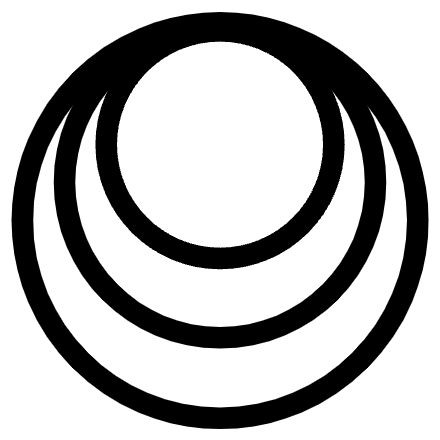The foundation of my demiself identity* is that I was born and I will die. I define my existence within a larger linear timeline in terms of these two imaginary events I can never actually know, but which I am wholly certain are real. This creates the demiself conundrum**: I seek the certainty of who, what, and where I am, yet I believe in two events of which I can never be certain. I am essentially searching for a truth that is tangible under assumptions that are not.
The reason time is such a tricky concept is because it is entirely imaginary. I never directly experience it; I experience movement and change and explain it away with time. I propose A and B, and therefore C. Underpinning the entire edifice of time is my own imaginary timeline starting with my birth and ending with my death. My conviction that I was born and that I will die set me on an imaginary path connecting the two. In my unending moment, I am convinced I am moving further away from the former and toward the latter, and I point to the change around me as evidence. But no matter the amount of evidence I accumulate, time remains imaginary, along with the two events of my birth and death.
Once accepted, the concept of time, anchored by my imagined birth and death, forms the root system of the entire demiself perspective. I accept I was created by two people who preceded me in the linear timeline. I in turn imagine my own parents being birthed by parents of their own, and so forth, until the imaginary timeline has blossomed into the construct that the world I awaken into is billions of years old, and I am just a small, temporary observer of it.
My belief in time does not stop there; it expands into space. Just as I believe there are times that are not now, I also believe that there are places that are not here. The place where I am becomes a vanishingly small part of the totality of places, all existing concurrently and of course unknowable. I take as evidence stories, photos, videos, and various types of artifacts; all of which come into existence the moment I observe them. I see a photograph and, instead of understanding that the event and the photo literally came into existence the moment I experienced them, I instead imagine they pre-existed my moment in time and space.
In demiself, I become accustomed to accepting imagined authority in lieu of my direct experience. I constantly build a reality based on unknowable assumptions. My mother shows me a photograph and I instantly believe it occurred before my own birth, reinforcing the imagined linear timeline. In truth, all I actually know is that photograph came into existence when I saw it. Or more accurately: I created that photograph, and my mother holding it, in the moment I observe them. Why would I accept otherwise? Why do I imagine origins I do not directly experience? How can I possibly hope to arrive at a truth when I readily accept explanations without any direct experiential evidence? My experience tells me there is only this unending moment of now. But in demiself I allow my imagination to override and supplant my direct experience.
In truth, I am a storyteller who creates by imagining. I can create new things out of nothing, and I can demonstrate that to myself by sitting down and writing a story of an imaginary boy in an imaginary world. And just like that, the boy exists. I do the same thing when my mother shows me that photograph. I forgot that they only existed when I experienced them, and instead imagined they preceded that experience. The imaginary constructs of time and space beyond my own direct experience lay the foundation for the demiself perspective that my mother and her photograph happened before me in time and elsewhere in space.

I had imagined them and got lost in my belief that either of them exist outside and independent of my experience and observation of them. But the self-deceit of demiself goes further. My entire behavior is shaped by these beliefs. I give these two people who supposedly created me authority and dominion over me once I accept the story that they created me. They become my first authorities and set the pattern for all other authorities. They always remain the imagined and original authorities over my existence because they created me.
In just time and place, the demiself conundrum is clear: I seek to know while accepting that I cannot. Demiself is the state of hopeless ignorance, submission, and confusion. I cannot possibly find concrete certainty because the very foundations of my identity are uncertain. I cannot possibly know myself when all my foundational convictions about myself are unknowable. I cannot grow the flower of truth in the soil of lies.
Triself resolves the demiself conundrum by investing in the constants of my existence rather than the variables. Instead of explaining my existence in terms of two imaginary events and infinite imaginary places I can never directly know, I explain my existence in terms of the stable features that I do know with absolute certainty. I resolve the demiself conundrum by letting go of the imaginary demiself model, starting with the idea that I was born and I will die.
…
* Demiself identity – My belief that I am a temporary observer of a small part of a larger universe or largely unknown and unknowable dimensions
** Demiself-conundrum – The impossible aspiration to know the truth of my nature while simultaneously believing in imaginary events I cannot experience
